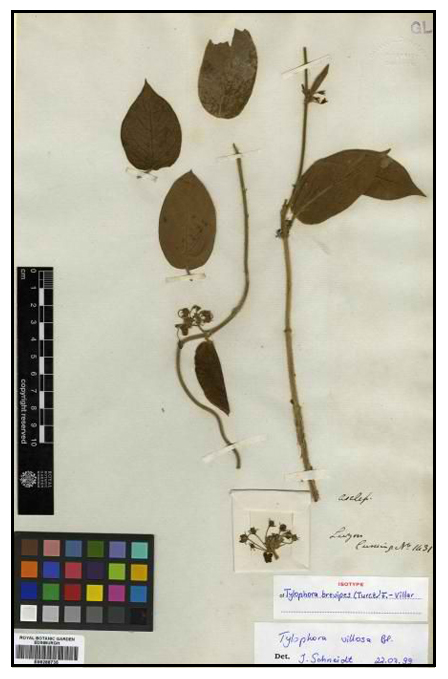
Family • Asclepiadaceae
Posuka
Tylophora brevipes (Turcz.) F.-Vill.
| Scientific names | Common names |
| Amblyoglossum brevipes Turcz. (Unresolved) | Sarungkar (Ilk.) |
| Tylophora brevipes (Turcz.) F.-Vill. | Posuka (Tag.) |
| Tylophora brevipes (Turcz.) Fern.-Vill. is an accepted name The Plant List | |
Distribution Constituents Properties Studies Availability |
© Godofredo U. Stuart Jr., M.D. |
Updated April 2018 / October 2015
![]()
 |
| IMAGE SOURCE: Tylophora brevipes F.Villar / Creative Commons: Attribution-NonCommercial 3.0 Unported (CC BY-NC 3.0) / Royal Botanic Garden Edinburg / Herbarium Catalogue |
| Additional
Sources and Suggested Readings (1) Tylophora brevipes (Turcz.) Fern.-Vill. / Synonyms / The Plant List |
| It is not uncommon for links on studies/sources to change. Copying and pasting the information on the search window or using the DOI (if available) will often redirect to the new link page. |
• |
 |

 Botany
Botany